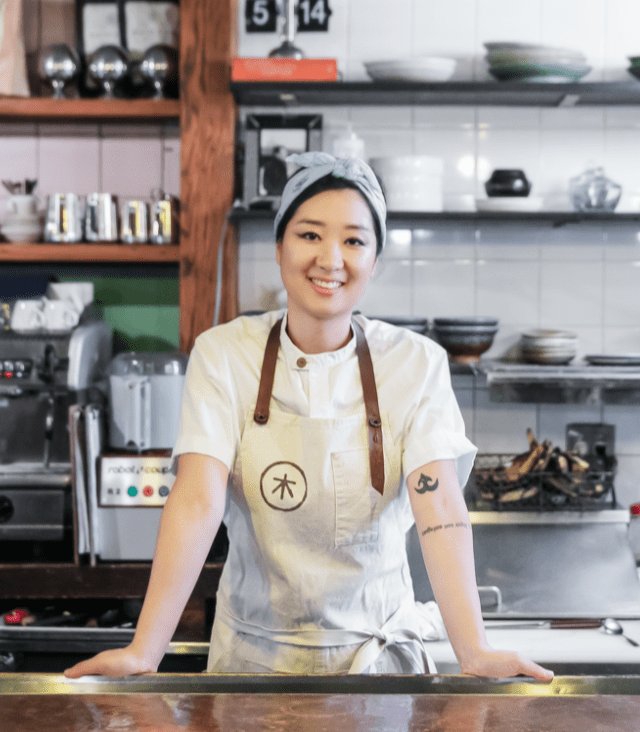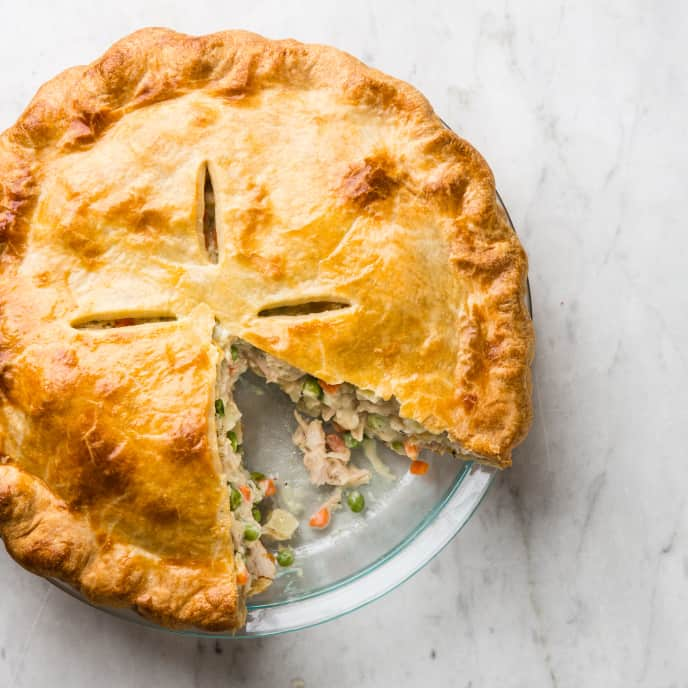Chef Kyungmin “Kay” Hyun hails from Busan, a coastal city south of Seoul known for its fresh ocean fare. Chef Kay’s roots are in Korean cuisine, but her ongoing love affair with Spanish flavor profiles and her vision of “tapas” gave birth to Mokyo, her second restaurant. Her debut restaurant — Thursday Kitchen — opened in 2016.
Chef Kyungmin “Kay” is definitely a chef to watch. After making a name for herself through her delicious works at Nobu Matsuhisa’s Mai House, Jean-Georges Vongerichten’s Jean-Georges, and ABC Kitchen, has opened not one but two restaurants. The first Thursday Kitchen back in 2016 and four years later, Mokyo. While her roots are in Korean cuisine, Chef Kay has an ongoing love affair with a Spanish flavor profile. The latter helped her envision the “tapas” concept paired with using Mexican, Spanish, and Japanese flavors at Mokyo. We caught up with Chef Kay to find out how she is coping with the pandemic, and how she develops new dishes.
How are you managing chef life in the middle of a pandemic?
During these slower times, I’ve had more time to experiment with different techniques and flavor combinations. I’ve also changed up some ingredients, whether it be a seasonal ingredient or slightly change existing dishes, to enhance the customer’s experience. I’ve also had more time to train my employees, one-on-one, to better their skill levels, and cook consistently. At the beginning of the pandemic, I enjoyed resting. I haven’t slept like this is many years since I’ve been cooking. However, I am busier than ever now.
How has Mokyo found success despite the pandemic?
I believe the success behind Mokyo despite the pandemic has to do with the constant obsession to aim for perfection. We try to keep our food well balanced (flavors and textures. The menu always includes cultural/seasonal ingredients through my travels and research. My front of house team provides an excellent service and educates customers with a more delicate touch to service while creating a comfortable environment for customers. It also helps that we’ve developed regulars overtime in the East Village pre-covid, and many Thursday Kitchen fans come to try the new restaurant and spread the word for us.
How does Mokyo differ from Thursday Kitchen?
The main difference is that Mokyo was to showcase the more good culinary techniques I’ve developed over time. Mokyo provides a more elevated menu and service as opposed to Thursday Kitchen’s casual vibes.
What is it about Korean and Spanish flavor combinations that interest you?
Korean cuisine tends to have lots of spicy, fermented, and pickled flavors—Spanish cuisine involving vibrant flavors such as cilantro, salsa verde, limes, chilies. The two cuisines are very different yet similar; for example, the Spanish using chilies, tomatillos while Koreans use gochujang, a sweet/tangy chili pepper paste sauce. However, the combination of two spices creates an entirely new experience for any culture.
The menu is not only limited to Korean and Spanish flavors but multicultural based on my travels.
Was dumpling-making a tradition in your family?
No, it was not, but overtime working at restaurants and having my own forced me to learn how to wrap dumplings properly. Now I am a master at it.
- Do you have any favorite fillings? I like to keep it simple. Not too many flavor combinations
- Do you have a favorite preparation? The braising process of meats is my favorite preparation because something is satisfying when the meat’s texture changes over hours.
Can you share your inspiration for Mokyo Corn Dumplings?
I am obsessed with Mokyo’s corn dumplings. Tell me more about your process of creating these. The inspiration comes from esquites and elotes. The first bite into the dumplings, customers experiences rich white truffle aromas transitioning into a vibrant Spanish salsa verde with a hint of pleasant citrus followed by a ravioli texture. I add grits, causing the corn dumplings to be soft yet retaining the kernel texture of corn. I top it off with fennel and Parmigiano for extra texture and flavor.
Did you know they were going to be a success?
Yes. I was delighted with the texture and combinations of flavors. Even more so than my dumplings at Thursday Kitchen, which is one of our top sellers.
How many recipe experiments did it take before nailing the perfect one?
I’ve lost count but probably closer to 30-40 recipes and different ratios of ingredients.
Why did you choose corn for filling?
My love for Spanish food and elotes, in particular, made me select this filling.
What are the do’s and don’ts when making them?
Sensitive timing, so it doesn’t overcook and ruin the skin’s texture and make sure the filling’s surface is creamy but still retains kernels for every bite.
What are expert or insider tips you have to perfect them?
Consistency and attention to detail. You must feel the texture with your rubber spatula while mixing and using your eyes to confirm the filling’s surface. I always mention to my staff to not multitask when making these dumplings and only concentrate on the dumplings. Looking away while making these dumplings can result in throwing away an entire two days worth of product.
Where do you see yourself after this pandemic?
Back in the kitchen attempting to recover and survive by creating new and innovative dishes that will lure people eat dinner with us.





















